One of Australia’s oldest and most visited tourist attractions is about to be unveiled after a $30M makeover, Owen Lynch speaks with the design team
August 8th, 2012
In the 134 years that the Scenic Railway site in Katoomba, Australia, has been in operation, it has spent nearly 70 of those celebrated as one of Australia’s most successful tourist attractions.
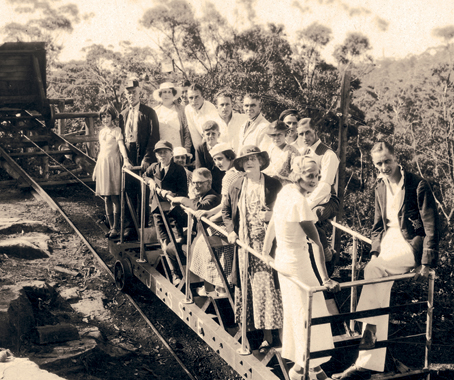
Perched on the edge of a vast World Heritage listed National Park in the Blue Mountains, the railway was originally built in 1878 to transport coal miners to the valley floor.
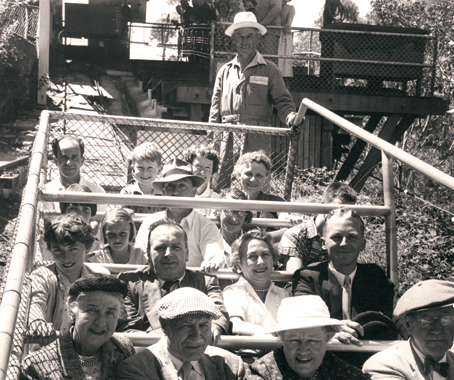
Since conversion to a tourist attraction in 1945, four trains have rattled up and down the 310m track, carrying in excess of 25 million passengers safely.
A $30million overhaul is currently underway that will see a new train, two new stations and extensive rebuilding of corral, interpretive infrastructure and ticketing facilities at either end of the line.
PMDL have been have been working closely and holistically with the Hammon Family, the operators of the attraction, for nearly 15 years.
“Since the inception of the masterplan, PMDL has formed a close working relationship with the Hammon family, as well as the other members of the design team, which has been fundamental to the success of the staged development over time. The key has been to build on the strengths and history of the site, exposing the machinery and operations, as a true, real, working site…” says Practice Director Peter Doddrell.
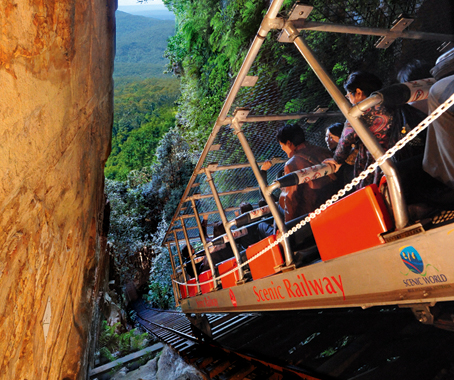
As an iconic attraction, the site is steeped in historical significance and demanded a great deal of sensitivity in re-interpreting it for a contemporary audience.
“…we have worked with simple materials such as steel, stone and timber, building on the ’industrial’ nature of the site and its coal mining history. At every opportunity we have made sure that visitors are connected to each part of the site, the moving parts and machinery, whilst respecting the heritage landscape.”
Not for the faint-hearted, the train journey is experienced at quite some speed on a 52° incline. Even for its time, the railway was a remarkable feat of engineering that to this day holds the title of ’The World’s Steepest’.
Conscious of the tricky site limitations and ever-changing weather conditions, we asked Mr Doddrell what the greatest challenges were that the design team faced:
“The biggest challenge has been to meet current engineering and safety standards without losing the character and feel of the site. We liken the redevelopment of the site to being more “Alien” than “Star Wars”…. Even the new train has been developed with this in mind and incorporates the latest technology whilst retaining the excitement of the old ride.” He elaborates: “Wherever possible we have seized the opportunity to reinforce the essence of “being on the edge”, through planning and placement of structure, height and views.”
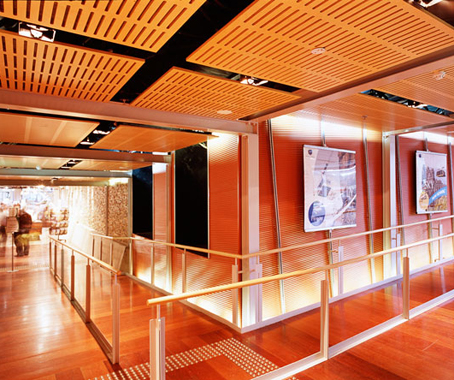
As the beauty of the natural environment is the primary draw card for the precinct, Doddrell explains how the cultural expansion in local tourism has resulted in an inclusive design proposal.
“The site needs to cater for all visitors regardless of origin and to that end the game has been to make the site speak for itself, without too much need for signage. Design of tourist facilities is much more than addressing the needs of the visitor. It needs to respect the environment, the staff and the neighbours, as well as provide a unique experience that people share after leaving. Scenic World provides the opportunity to bring together “nature” and the “industrious nature of man” in a single setting, and this provides attraction and messages to all.”
The completed Scenic Railway refurbishment will be unveiled in December 2013.
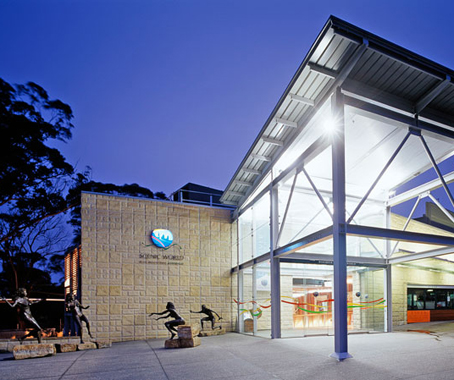
INDESIGN is on instagram
Follow @indesignlive
A searchable and comprehensive guide for specifying leading products and their suppliers
Keep up to date with the latest and greatest from our industry BFF's!

A longstanding partnership turns a historic city into a hub for emerging talent

Welcomed to the Australian design scene in 2024, Kokuyo is set to redefine collaboration, bringing its unique blend of colour and function to individuals and corporations, designed to be used Any Way!

London-based design duo Raw Edges have joined forces with Established & Sons and Tongue & Groove to introduce Wall to Wall – a hand-stained, “living collection” that transforms parquet flooring into a canvas of colour, pattern, and possibility.
Desking Systems are offering specifiers and architects the chance to win one of 8 trips.

With space management an ever-relevant consideration to take into mind when designing for workspaces, it’s sometimes easy to forget the practical matters should take priority – designing an office that enables productive, meaningful work.
The internet never sleeps! Here's the stuff you might have missed

The final day of CPD Live’s 2025 season delivers three must-attend sessions exploring circular design for furniture and fitouts, and the science behind safe, high-quality drinking water. Starting from 9 AM AEDT, 16th October – it’s your last opportunity this year to join our Live CPD sessions and finish 2025 inspired.
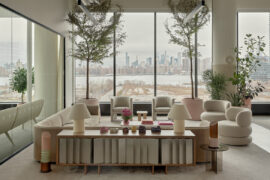
The New York headquarters of haircare brand, Amika, has been designed by Civilian as the antithesis of a standard business hub.
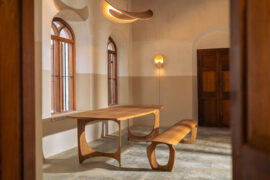
From Australian architects to Spanish and Indian designers, Design Mumbai 2025 expands its international reach — proving India’s growing role on the global design stage.